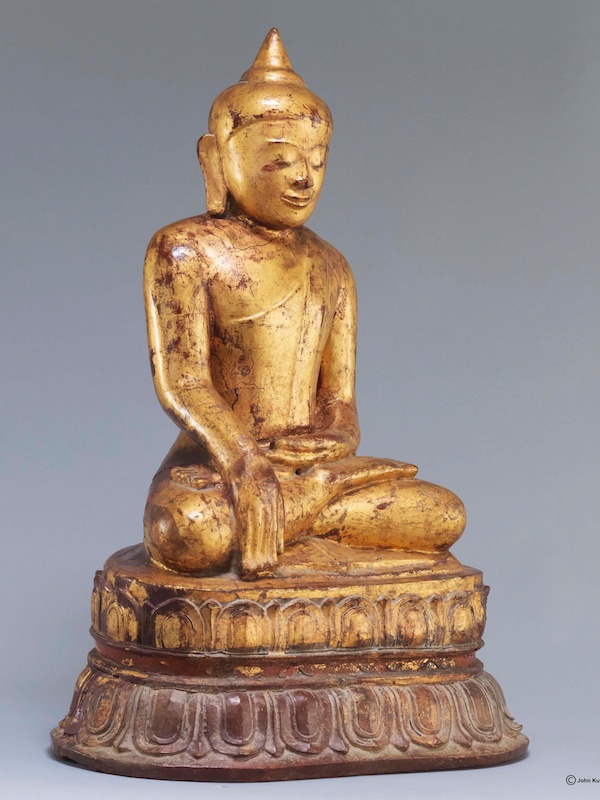
|
Seated Buddha from Burma, Post-Pagan style from Ava Period, gilded teakwood, ca 1500-1690
Buddha statue made of lacquered wood, 88 cm H, seated on a double lotus pedestal, with right hand touching the earth (bhumisparsa mudra). It has a full round face with eyebrows meeting over downcast eyes, a relatively short ushnisha, and a short thick neck. There is a brown lacquer undercoat and several layers of gold foil gilding. The back has been restored where the original wood was rotten and weak. This Buddha is in late Pagan style but from a later period, known as Post-Pagan.3 The Museum of Anthropology arranged for a carbon-14 test of a wood sample from this statue, that indicates a date for the teakwood of 1468 to 1642 AD at 95% reliability. Therefore, it dates from the Second Ava period, ca 1500-1690. This statue was lent to the MoA for the Buddhist Art Exhibit, but it was not exhibited due to constraints of limited space and display cabinets in the exhibition gallery.
Ref 3 Typical Post-Pagan features are the body, the round head shape and short neck, the ushnisha with short finial, the ear lobes which do not quite touch the shoulders, and the double lotus base. This statue is similar to several Pagan period and Post-Pagan seated wood Buddha statues in the Pagan Archeological Museum. See Mirrored in Wood, Burmese Art, figure 22 for one of these Pagan period Buddha statues in the Pagan Museum. Typical Post-Pagan features are the body, the round head shape and short neck, the ushnisha with short finial, the ear lobes which do not quite touch the shoulders, and the double lotus base. This statue is similar to several Pagan period and Post-Pagan seated wood Buddha statues in the Pagan Archeological Museum. See Mirrored in Wood, Burmese Art, figure 22 for one of these Pagan period Buddha statues in the Pagan Museum.
|